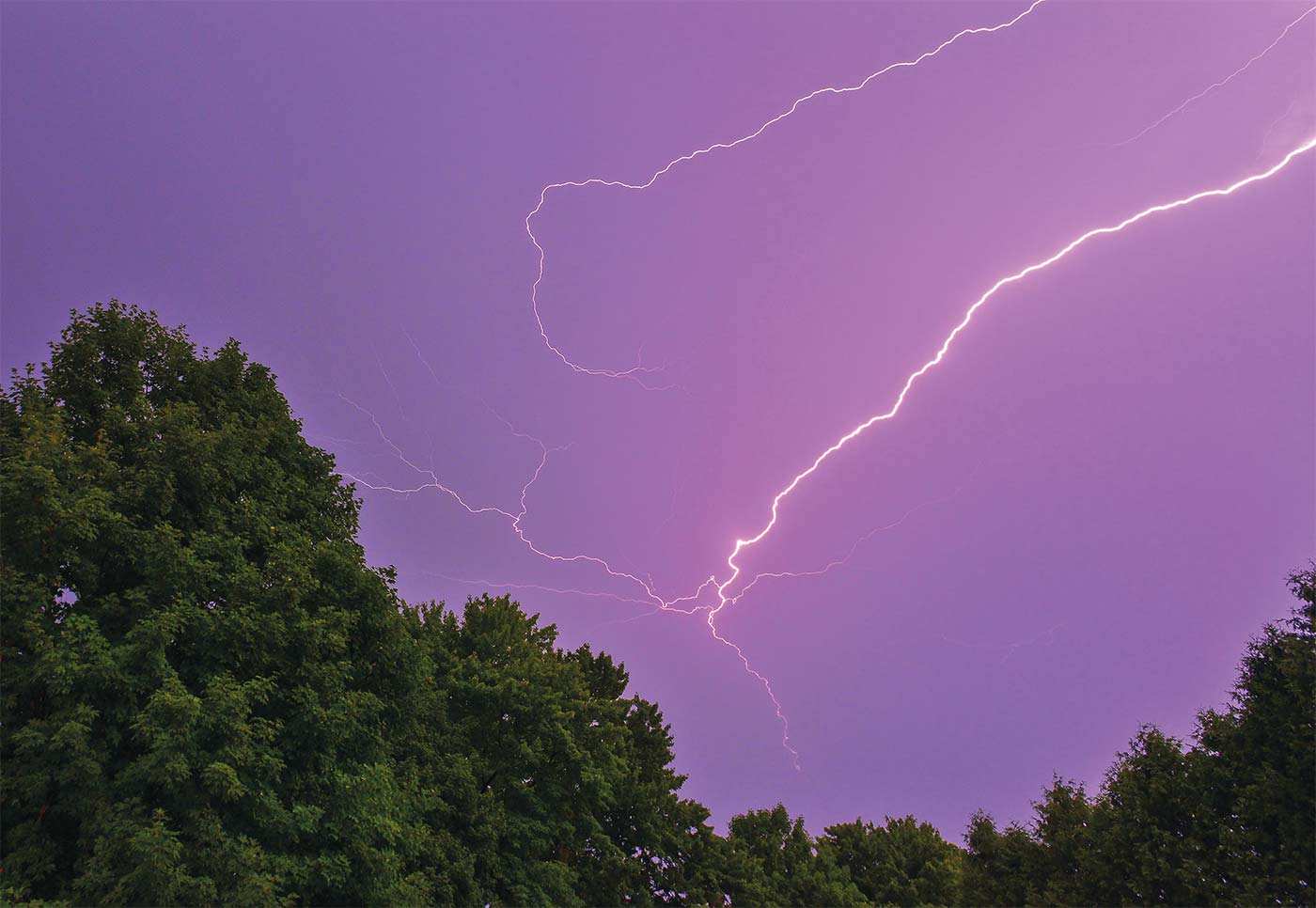Scott Whittier
Too much rain is not friendly to farmers. –Scott Whittier, National Weather Service
Based on your three-plus decades of experience with the National Weather Service here in Vermont, give a broad-brush overview of what’s happening with our climate.
Over the course of the last 30 years, we’ve seen more frequent heavy rainfall events and more frequent and prolonged drought periods, and that’s reflective of climate change. We see more intense systems rolling through, or in some cases, remaining stationary over a region because they get blocked by other systems. These atmospheric steering patterns can cause a system to park somewhere as it just wrings out moisture.
A typical summer sees 15 inches of rain over the course of 40 days. Those 15 inches of rain now come during 25 to 30 days. Rainfall events are more intense and not as evenly distributed as they used to be, so people are feeling slammed. Sometimes the rain falls on saturated ground, sometimes on solid hardpan. If the soil is soft and permeable, the land can absorb the moisture more effectively. If the soil is already saturated, as has been the case in many places this year, heavy rain is more likely to become runoff and overwhelm stormwater systems, which can lead to flooding.
And the unusual weather started back in the early spring.
That’s right. The problems began with the hard freeze many places experienced in mid-May. A hard freeze itself is not uncommon at that time of the season. Problems arose because April was the warmest on record with a week of temperatures in the 80s. That unusual, prolonged warm stretch jump-started germination, and the fruit trees started to bud several weeks ahead of schedule. By the time the hard freeze hit in mid-May, the buds were already mature, which made them more vulnerable. Depending on location, some orchards lost 100 percent of crops while others suffered less damage. And then we had a rainy spring and summer. Too much rain is not friendly to farmers.
What accounts for the increased frequency of torrential rains in recent years?
With a warming climate, the atmosphere can hold more water. I often use a sponge analogy. Take a dried-out, crinkly, flat sponge. That’s the atmosphere in winter when it’s cold. Now take a fresh sponge out of its package; it’s soft and supple. That’s the summer atmosphere. Put both sponges in a bowl of water for a few minutes, then squeeze them out. The dried-out sponge will absorb and yield less water when you squeeze it while the fresh sponge will soak up and produce more water when squeezed. That’s what happens now in our summers with a warming climate.
Explain how the topography of Vermont with our steep mountains, broad valleys, and rivers throughout impacts weather situations.
Water and gravity are powerful forces especially when combined. If 3 or 4 inches of rain falls on the Champlain Valley, you’ll get ponding and streams will rise. There’s no real force in the water because there’s no gravitational pull due to lack of elevation; 3 to 4 inches of rain in the mountains are another story. Our mountains are capped with granite or rock ledge. When the rain hits those mountaintops at 3,000 or 4,000 feet, it just rolls right down the rocky surface until it hits clay or some other shallow soil around 2,000 feet. The water is already moving swiftly due to gravity, and that momentum doesn’t give the soil enough time to absorb it. Water will continue its course to the lowest point at the base of the mountain: a river, stream, field, road, someone’s house. During the July 10 storm, we got 5 to 8 inches of rain in the mountain regions so those impacts were devastating.
How about the landslides we’ve seen around the state?
The land was saturated and couldn’t absorb any more water. Water also weighs a lot. Think how heavy a gallon of water or milk feels. We had already saturated soils combined with the force of more rain continuing to fall. The force of that water on saturated soil caused the land to break, or slide. Water had to go somewhere, and something had to give. The land was breached and weakened and slid, taking all the trees and undergrowth with it.
Are these weather events the portent of the future, part of a meteorological cycle, or some combination?
It’s a combination. The increased frequency of heavy rainfall events will persist for decades to come as the atmosphere continues to warm. These blocking patterns I mentioned are more likely to occur with a warming climate. It becomes a complicated mess when you have a long duration of significant weather events happening one on top of the next.





